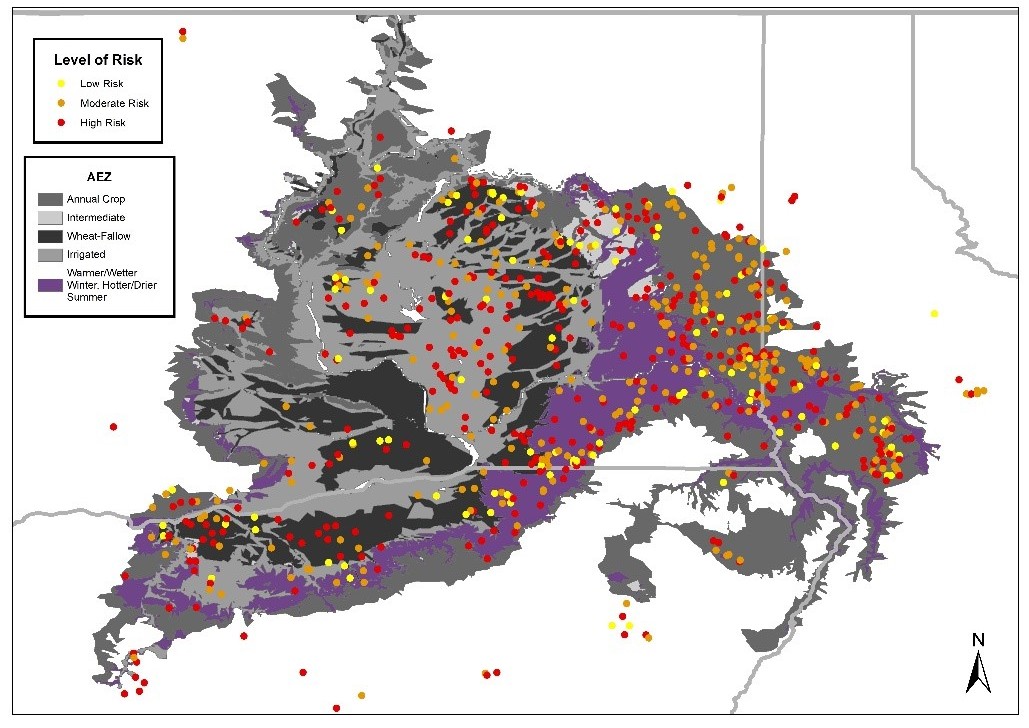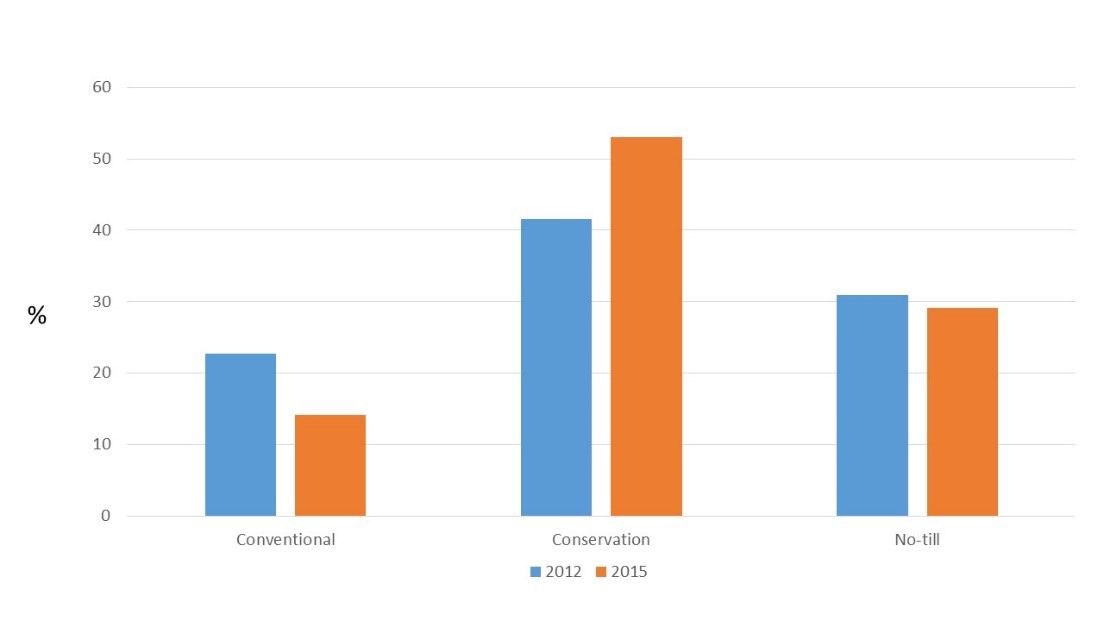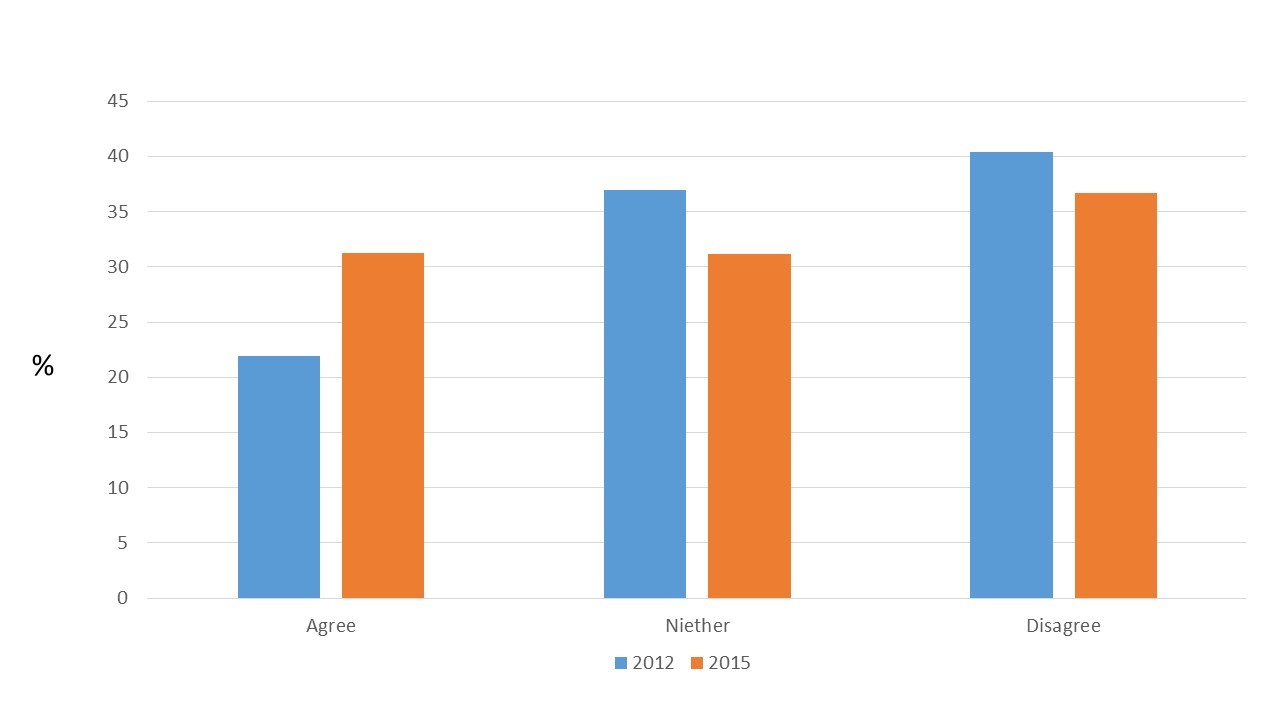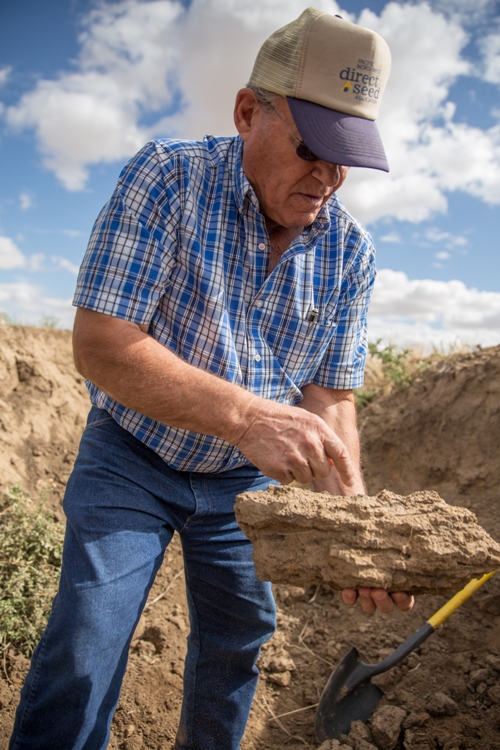Producer Survey
REACCH conducted two mail surveys of Inland Pacific Northwest cereal producers to gather information about general operations, conservation approaches, and perceptions of climate change risk. The first mail survey was sent out during the winter of 2012-2013, using a survey sampling frame drawn confidentially by the National Agricultural Statistics Service. The primary sampling criterion was based on production of 50 or more acres of wheat during the 2012 harvest year. Out of a randomized sample of 1,988 producers, 900 completed surveys were returned for a 46% response rate.
A follow-up mail survey was sent out during the winter of 2015-2016 to replicate previous measurements. The survey sampling frame shifted from the original survey due to a change in policy for the National Agricultural Statistics Service. An alternative sampling frame was derived from the North American Industry Classification System along with a supplemental sample of producers who selected to be re-surveyed from the original effort. The primary sampling criterion was based on production of 100 or more acres of wheat calibrated to the harvest year. A total of 462 producers completed the survey for an overall 43% response rate.


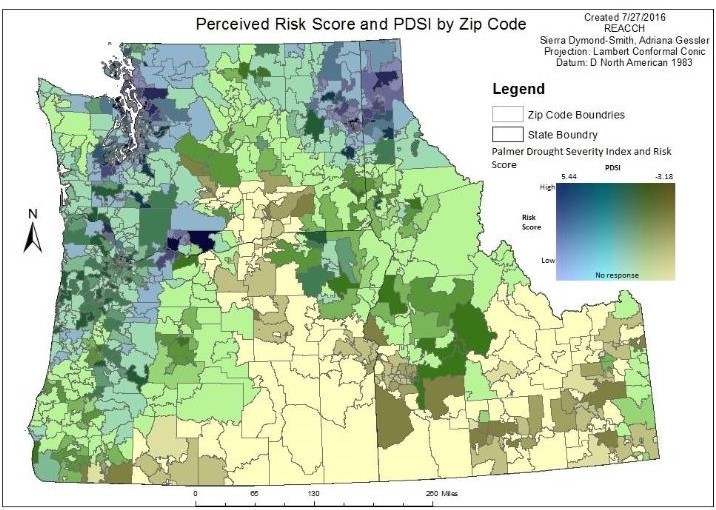
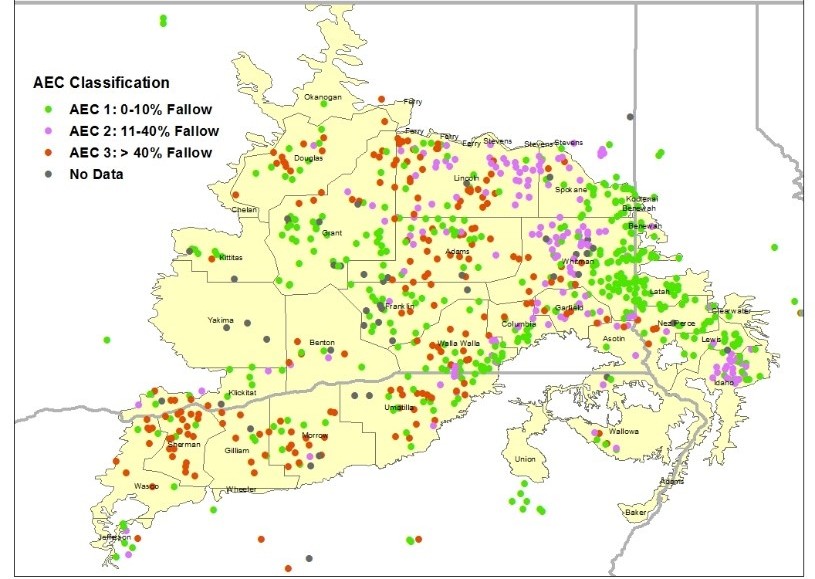 ,
, 